Politics
Khargone Ground Report: Residents Say ‘Fed Up’ With Repeated Attacks On Hindu Religious Processions
Subhi Vishwakarma
Apr 29, 2022, 06:07 PM | Updated 06:17 PM IST
Save & read from anywhere!
Bookmark stories for easy access on any device or the Swarajya app.
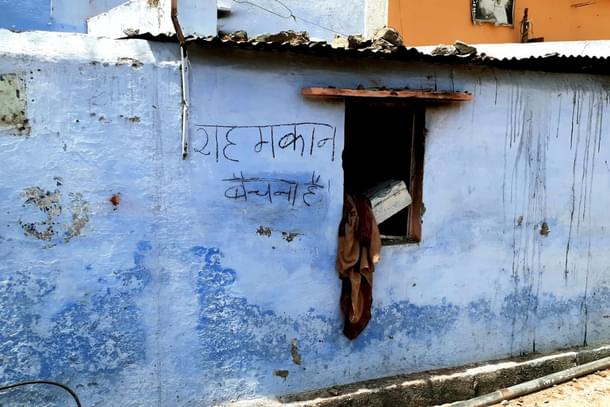
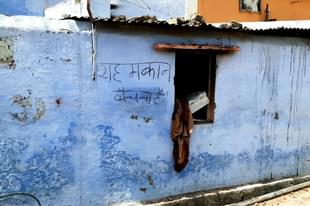
Khargone, Madhya Pradesh, 18 April: The Khargone city has been under curfew for more than eight days now.
Section 144 of the CrPC, that prohibits four people from assembling at one place, has been imposed in the entire city. Streets wear a deserted look. Residents peek through glass windows but rush inside their rooms if someone approaches them to talk.
The feeling of unease intensifies as one walks the streets. Makeshift checkposts with armed jawans, set up under temporary tents, suggest the possibility of violence again.
All this is because a Hindu procession taken out on Ram Navami earlier this month was allegedly attacked by a mob comprising Muslims.
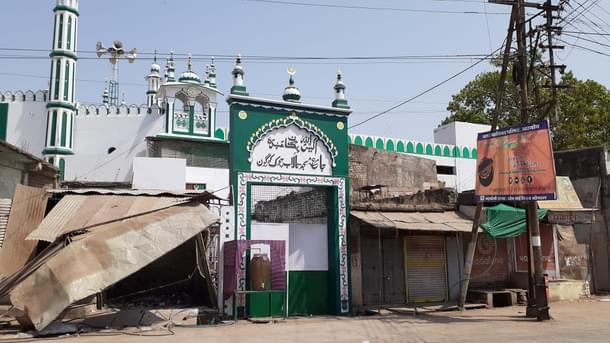
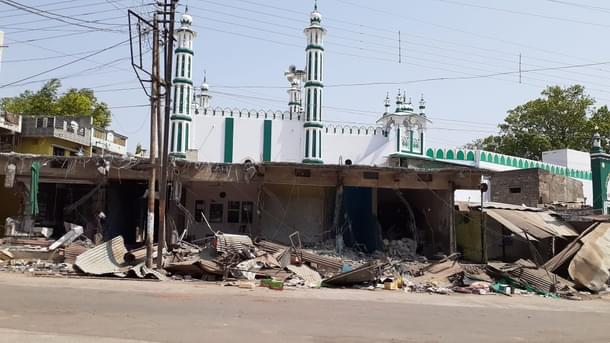
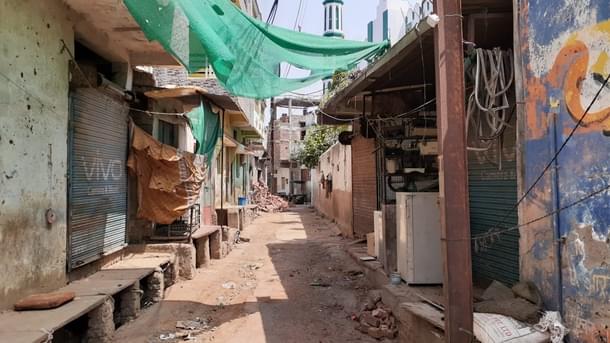
On 10 April, the city celebrated the sacred day after a gap of two years as processions were banned due to Covid-imposed lockdowns.
This year, revellers painted the city saffron with flags and frills. The decorations can be seen on almost every shop and street corner even a week after the violence.
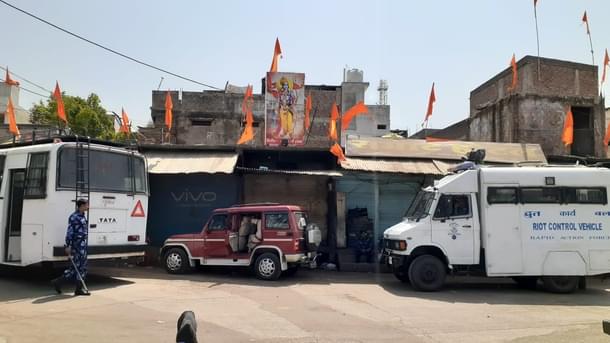
I visited Khargone on 18 April when fresh orders for curfew were given again by the administration. This was after a 28-year-old man — a Muslim named Ibresh Khan — was found dead.
The district administration had relaxed the restrictions three days earlier, allowing residents to move around and get essential items in a two-hour time period in the morning. The situation was gradually returning to normalcy when the discovery of Ibresh’s body on 17 April inflamed passions all over again.
A Hindu man, Shivam Shukla, who sustained grievous injuries in the violence, continues to battle for life. He is admitted in Indore’s CHL Apollo Hospital. His condition is stable as per an update posted by the official Twitter handle of PRO (Public Relation Officer) of Khargone on 15 April.
Several residents of the six spots in the city where the violence primarily broke out, have put up banners saying ‘This house is on sale’.
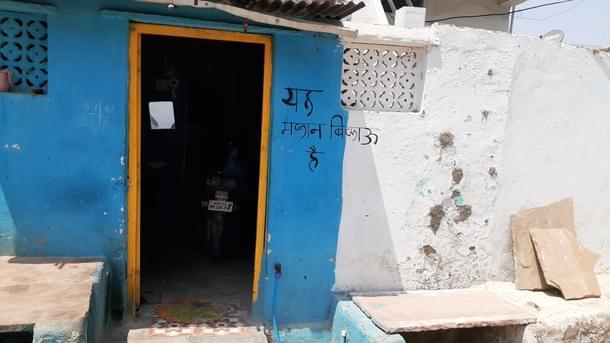
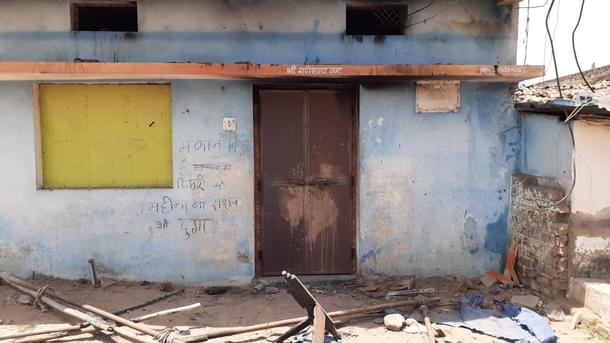
So far, 44 first information reports (FIRs) have been registered and 158 suspects arrested. Most suspects are Muslims. The local administration has invoked the stringent National Security Act against two persons allegedly involved in the violence, reported PTI.
This ground report is a documentation of the fear and tears of the local residents who say they are fed up with the “recurring” violence on Hindu festivals. Some blame history, others blame the administration.
About Khargone
The Khargone city falls in the southwestern part of Madhya Pradesh. It was previously known as western Nimar and comes under the Indore division. The city is around 123 kilometres from Indore city. It takes a little more than three hours to reach here by road. It has no railway station.
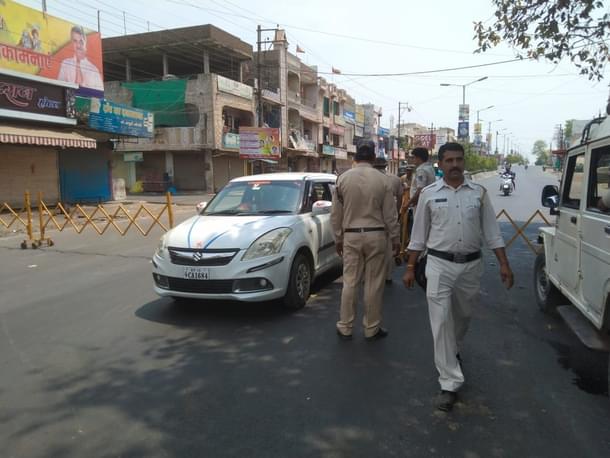
I took a taxi from Indore city to reach Khargone, and followed the Sendhwa-Khargone route. Those taking this route have only one entrance to the city, and that is from near the Navagraha Temple.
This entrance was heavily barricaded, beginning from five kilometres before it. It was only after the mandatory identity check at multiple checkpoints that I could enter Khargone.
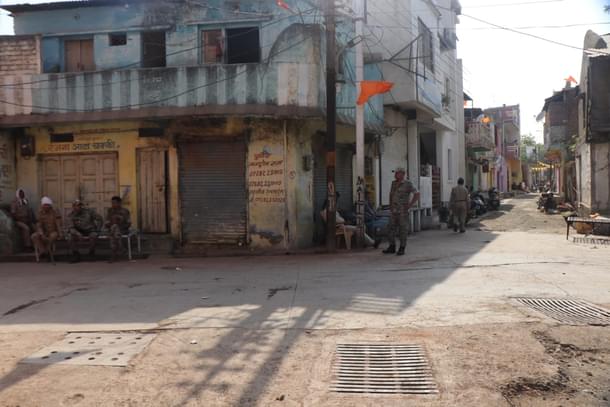
I informed the police control room before entering. The police told me that vehicles were restricted that day, and thus I would have to leave the taxi near the entrance and walk my way through the city. However, they allowed the taxi after persuasion.
The same day, the administration cancelled the visit by a local BJP leader, Kamal Patel.
A Brief Background
Hindus hold a religious procession in Khargone on Ram Navami and Dussehra every year. It begins from the epicentre of the city — Talab Square.
There is a temple of Sheetla Mata, in the Gaushala Marg area (near Talab Square), from where the procession begins before it goes around almost the entire city.
Talab Square has a mosque located behind shops. The procession passes the mosque every time, residents said.
Dhanna Lal Pawar, a resident of Gaushala Marg, told this correspondent that this is the most communally sensitive area of the city.
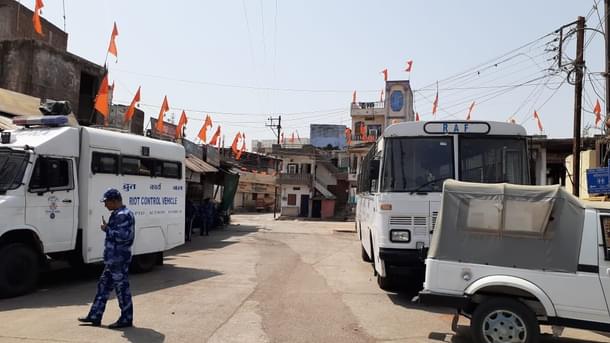
Every time communal clashes happen, they begin from Talab Square and spread in the town like wildfire, he said, and alleged, “Muslims start an attack from here in order to gather the police at one place. Then, their supporters start rioting in the other parts of the town where there are few policemen.”
A woman, who said she was the sister of a Vishwa Hindu Parishad volunteer named Ravi Jaiswal, said, “To celebrate our festivals we need protection, but their [Muslims] processions with the same DJ pass by our temples peacefully.”
She agreed to get clicked but declined to give her name. She asked, “Where is it written that you cannot play DJ in front of a mosque? If we are living together in the same colony, then why can’t we celebrate our festivals peacefully?”
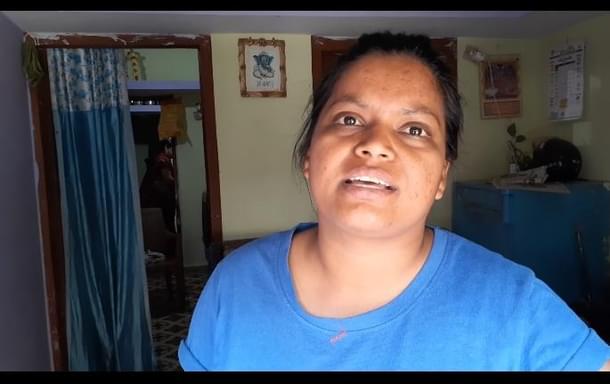
Notably, multiple media reports have claimed that the violence broke out after Hindus played DJs in front of the mosque during their namaz and “provoked” the Muslims.
The last time the city saw violence during a festival was on 8 March 2020 when a clash broke out in the Motipura area and several houses were set on fire, locals say. The violence spread to other parts of the city. Testimonies of victims of that episode are given later in the report.
Locals name the city’s usual sensitive areas as Talab Square, Motipura, Gaushala Marg, Bhatvadi Moholla and Sanjay Nagar. They say these areas face repeated violence on Hindu festivals.
However, this time, other areas were also targeted namely Anand Nagar, Bhausar Moholla, Rahimpura, Khaskhas Vadi and Tavdi Moholla, locals say.
What Happened This Year
Dhanna Lal, who lives near Talab Square, told this correspondent that around 5.30 in the evening on 10 April, the procession was moving back towards Talab Square.
People were dancing to the DJ music when stones began hitting them “from nowhere”.
Within minutes, hundreds of people “from the mosque side” came out, equipped with swords, stones and sticks. The stones were coming from all around, he said.
Dhanna Lal said his house is near a bakery owned by a Muslim and where mainly Muslims work. The bakery was shut but stones were coming from that side too.
He ran inside his house to protect his daughter. From behind the doors, he heard screams. He claims, he heard people saying, “Kill these Hindus, thrash them, cut them into pieces”.
Dhanna Lal says that by 6 pm, police had begun to use tear gas to disperse the mob. Yet, stone-pelting continued for about 40 minutes more. “The police protection was not sufficient to deal with such a violent mob,” he says.
After the mob was dispersed, close to 7 pm, the district magistrate imposed the curfew. “I stepped out of the house after listening to announcements regarding the curfew,” he says.
Ankush Yadav, who is associated with a non-government organisation named Navagraha Foundation and is helping victims with rehabilitation, told this correspondent that after Talab Square and Gaushala Marg, the rioters targeted Bhatwadi, Sarafa and Bhavsar Mohalla.
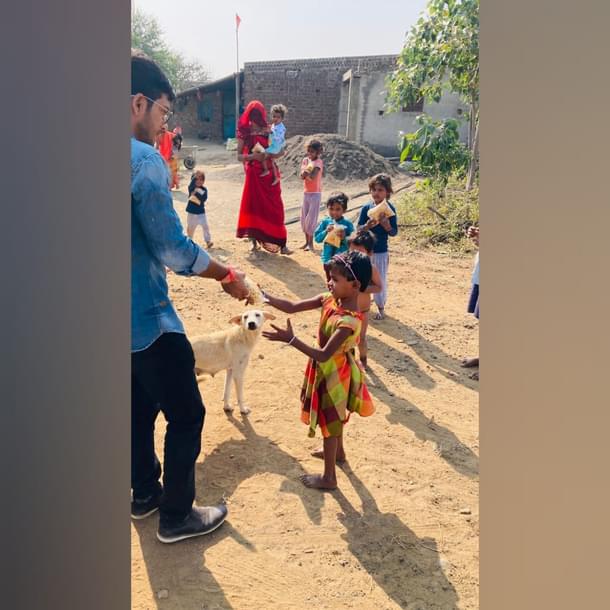
All these areas are less than two kilometres from Talab Square.
Also targeted were Sanjay Nagar and Motipura, where people allegedly blasted LPG cylinders while shouting religious slogans.
Ankush lives in the Gayatri Mandir area, which is five kilometres from Talab Square. He says many residents have relocated to their relatives' places and are waiting for the situation to get normal in Khargone.
Ankush, however, did not make this correspondent meet any of his beneficiaries, saying none of them were willing to talk to the media.
Sawan Gangle, a young man, has burn marks on his back. I met his mother at home while he is in the hospital.
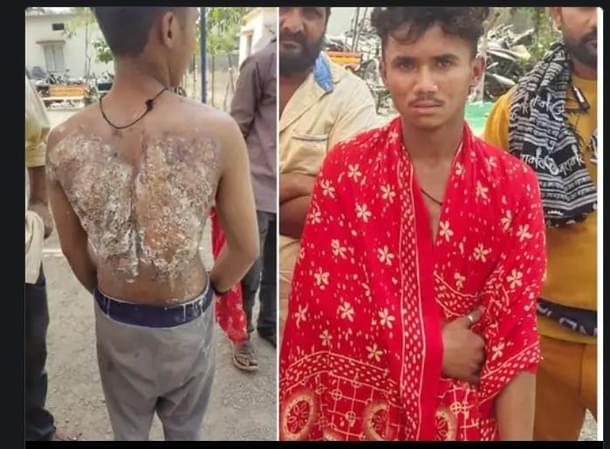
Along with Sawan, Kamlesh Verma and Ravi Kevat, both residents of Anand Nagar, faced severe injuries.
Khargone Superintendent of Police Siddharth Choudhary was shot in the leg while he was dispersing the mob in the Sanjay Nagar area. The attacker who fired at him has been identified by the police as “a boy aged 18 or 20”, but his identity has not been revealed to the public, as per PTI.
Testimony Of The Injured Cop
A video statement of SP Siddharth Choudhary was recently posted by Hindi publication Dainik Bhaskar.
It says,
“The Ram Navmi procession reached Talab Chowk by 5:15 in the evening on Sunday. There is a police booth there. In front of it is the mosque. The tableaux in the Ram Navmi procession are displayed in a queue at this intersection. By evening, almost all the tableaux had arrived. The DJ was playing. During this time there were about 12-15000 people here.
“The procession was getting delayed as the main tableaux had not arrived. After talking to office-bearers of the [procession] committee, I started moving the tableaux slowly, but it was time for azaan (call for namaz) in the mosque. Just then, some boys started throwing stones without any reason. We brought the situation under control in 15 minutes by using tear gas.
“After this, the procession moved forward slowly, but the crowd was huge. Still, Talab Chowk was made vacant. People of another community gathered. This whole area is surrounded by dense settlements. In some localities, Hindus and Muslims live together. Some areas have Muslim majority. Some settlements are so cramped that four-wheelers cannot go inside. Then, arson began. Policemen ran inside the streets. People were evacuated safely from their houses wherever fire broke out.
“I was in the Talab Chowk area. Meanwhile, news came that both the communities have come face-to-face in Sanjay Nagar, where the police force was weak. On hearing this, I reached Sanjay Nagar with my gunman, driver and three or four constables. I saw that both sides were standing in confrontation. The situation was looking tense. We hurled several tear gas shells to clear the crowd on both sides. The crowd retreated a bit.
“We tried convincing both sides, but by that time, there was more arson in this area. A mob damaged the fire brigade vehicle. Due to fear, a main man from fire brigade fled the spot. We tried to push the vehicle forward to control the fire, but there was a massive crowd in front.
“It was seven o'clock in the evening. It was getting dark. A person ran toward the Hindus with a sword in hand. In between, we were 12-15 cops. When he started bypassing the police, we caught him. When released, he began running again. Then I ran to catch him. Maybe someone was giving him cover. He fired at me. I got shot in the leg. At first, I thought it was a stone. I had trouble walking, so I stood on the side.
"My leg was bleeding heavily. My gunman told me that I had been shot. I started shouting that there was a bullet. The shouting was necessary because every street was crowded. It was estimated that there were 300 to 400 people on one side and 400 to 600 people on the other, packed in the narrow streets. My gunman was hit with stones. Blood poured out of his head. Despite this, he seated me in the car and took me to the hospital.”
Testimonies Of Residents From Affected Areas
Talab Square
The sister of Ravi (VHP volunteer) said she teaches in a school and has been witnessing such violence since 1991. “It happens every time the Hindus celebrate their festivals. Why do such things never take place during Muharram processions? We are fed up with the repeated violence,” she said.
She said that Hindus do not believe in violence. They are not violent people. “Until and unless someone pressurises them to do so, they will never opt for a weapon over words,” she said. Her statement can be watched here.
She blamed the administration, saying a minor clash had taken place even in the morning but police ignored it.
The 'Raghuwashi Samaj' had taken out a procession which, too, passed by the mosque. The police had placed barricades for not allowing big tableaux to pass by the mosque. This had made people angry.
“The police must have sensed the anger in the morning itself. So what happened in the evening is an administrative failure. They should have searched houses with drones. There were stones collected at every house here in Talab Square,” she said.
She said that there is a reason why Hindu processions are repeatedly attacked. “They [Muslims] are mostly into skilled labour. Hindus run shops. We are the ones who get affected by street violence,” she said.
The silence became heavier as I moved forward. Around 500 metres ahead, there was a cut to the left where a group was sitting under a tree. It was a rare sight.
However, no one in the group was ready to say anything. It was only after a promise that his identity would not be revealed that a man in his sixties agreed to talk. He was Hindu. He said, “The Ram Navami procession was moving when stone-pelting started. I have seen this kind of violence in Khargone only after 1992. Small clashes between Hindus and Muslims are common here; they happened last year during Dussehra as well.”
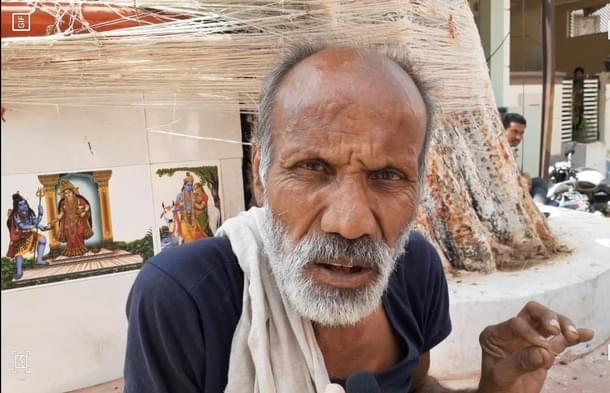
Like Ravi’s sister, he too said that Muharram processions are never attacked by Hindus when they pass by temples or Hindu shops.
Readers may watch here a video of the Muharram procession taken out by Muslims in Khargone in 2018, where they are dancing outside a Hindu temple with swords and pistols in hand, on a song that says , ‘…Ek baar mein mit jayega har baar ka jhagda, bulayun kya Ali ko (let’s settle this for once and for all, shall I call Ali?”
A resident who owns a tailoring shop in Bhatwadi Mohalla, had his shop burnt. He said the attack started from the mosque. He said the collector has promised him compensation. The resident declined to give his name.
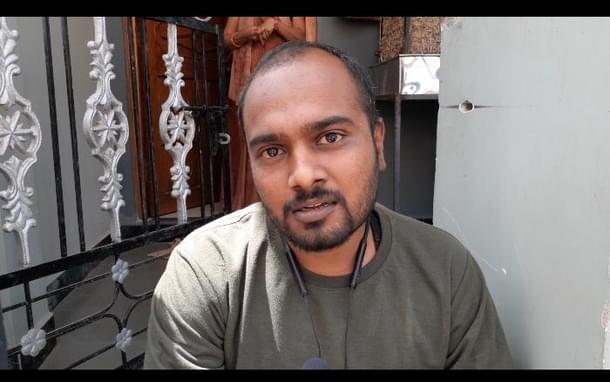
After the attack, the administration ordered the demolition of houses of the identified rioters. However, the government has maintained that the houses were demolished for illegal construction.
Dr Tameezuddin Shiekh told me that on 11 April he received a call from his friend who informed him about the demolition of his son's medical shop in Talab Square area. He was out to buy grocery when he met me.
He said, ”the administration did not provide any prior notice before demolishing our shop. The city was under curfew, I was not allowed to get out of my house and my only source of income was getting demolished.”
Tameezuddin said he has been working in the area for the last 50 years and he was not present in Talab Square when the riot broke out.
Another resident, Ayyub Khan, who lives in Aurangpura Square which is around one kilometre from Talab Square said the administration demolished six of his shops in Talab Square area.
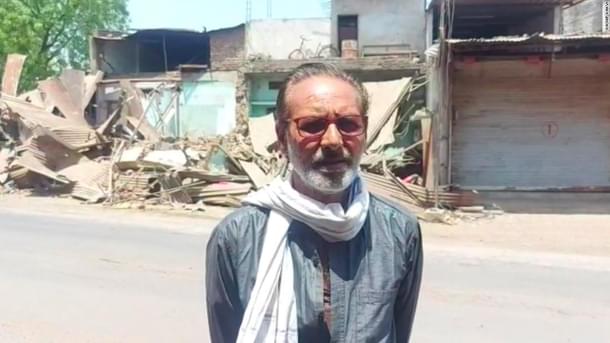
He said that since he is Muslim, he is not hopeful that the government would help him with rehabilitation.
“We were not part of the attackers. Yet, the administration targeted us. Suddenly, our set-ups which we built 20 years ago are now illegal.“
Sanjay Nagar
My vehicle was stopped two kilometres before Sanjay colony as this is considered a place most vulnerable to violence in Khargone. People stood in a queue behind a loading vehicle that was serving food. I asked a person if that was a food distribution drive.
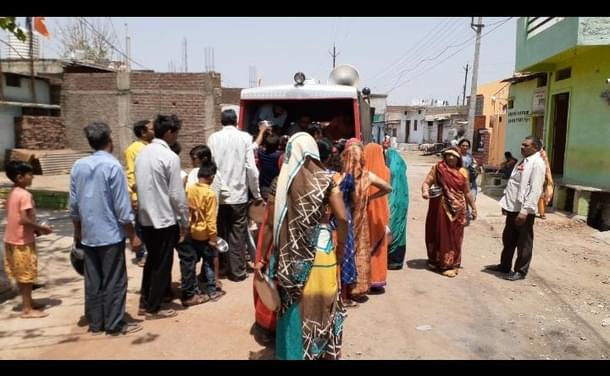
The person said he was serving meals on behalf of 'Khargone sports training association'. He said that along with local groups and institutes, the administration was also serving meals to violence-affected residents.
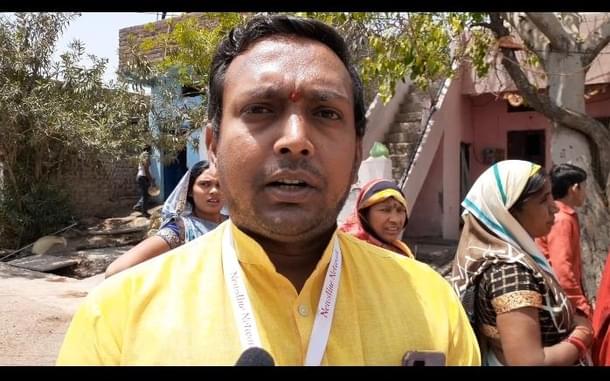
Moving ahead, I saw a shop that was partially burnt, a house covered in soot and a charred autorickshaw outside it. A man standing at the spot said, 'Madam mera ghar jala diya' (my house is burnt)”, and burst into tears.
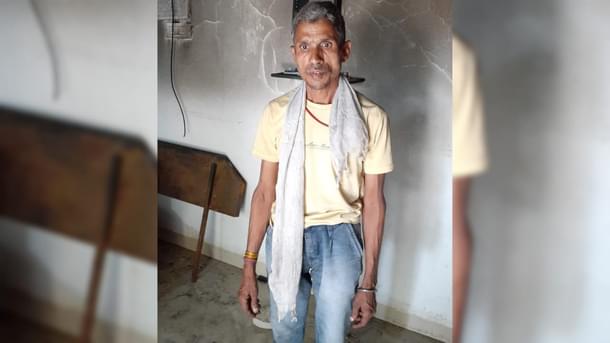
The man, Mahesh Patil, showed me his house. The bedroom was filled with half-burnt clothes; the kitchen had half-burnt utensils. All the mattresses and curtains that I could see were burnt. He said he had no clothes left to wear except the ones he was wearing. He said the rioters stole several of his belongings including his television.
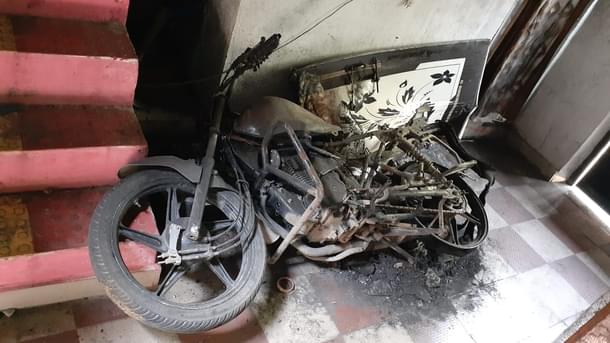
He said he had shifted his family to a rented accommodation. This was the fifth time his house was targeted in a Hindu-Muslim riot. The damage has been most severe this time. He has made up his mind to leave this colony forever, he said. “I am fed up with the violence,” he says.
The adjacent house had a burnt autorickshaw parked in front of it. A resident, Amit Bhandole, came out of the house and said, “this is my autorickshaw. The attackers burnt my rickshaw, my television and my house.”
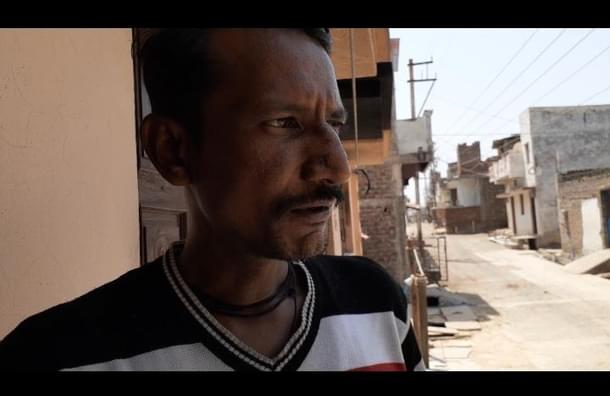
He said that around 7.30 pm when he was at work, his parents called him up to inform that stone-pelting had started. Bhandole repeated the statement made by other residents that communal clashes have been happening in Khargone since 1992, but this was a major one. He said the number of Muslims in the area is higher compared to other parts of Khargone district and that is the reason clashes occur. The attack was pre-planned, he said.
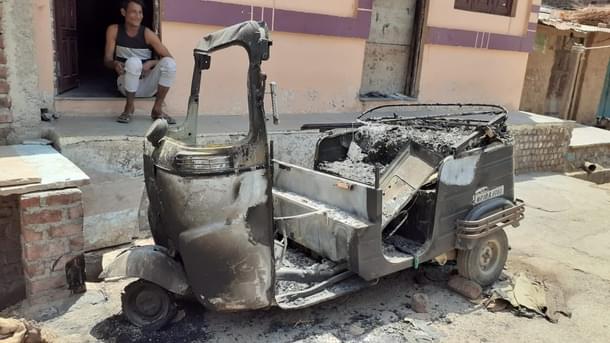
Bhandole said that communal violence sees retaliation from Hindus only in Sanjay Nagar. “Violence may begin at any place in Khargone, but the retaliation would be seen in Sanjay Nagar only,” he said.
Another resident, Manju Bai, also had her house burnt. The attackers blasted an LPG cylinder in her house, she said.
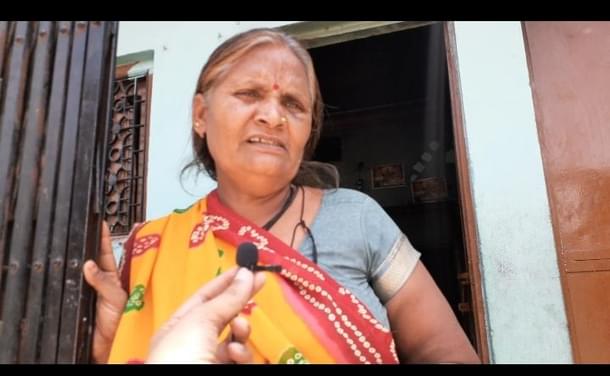
She said the rioters stole her buffalo and cow, besides a motorcycle and some jewellery. A poster on the house wall says, 'This house is for sale'.
Another resident, Prakash, said his house had been previously burnt in violence; this time it was attacked with stones and was looted.
Another resident, Asha Pawar, has a temple adjoining her home. She said that the colony residents, with help of the administration, installed the murtis of Shiva and his family in the temple on 15 February 2020.
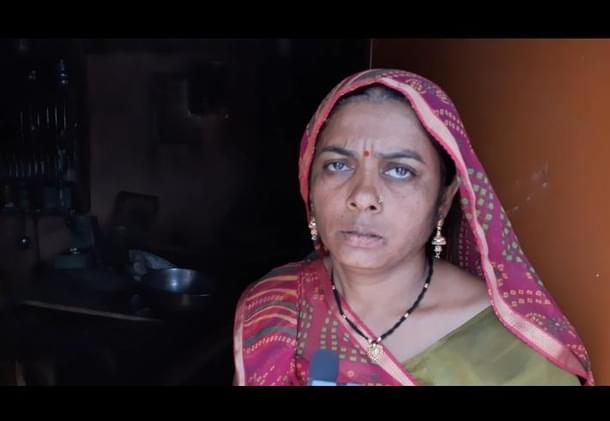
Rioters on 10 April vandalised the temple and threw the murtis on the floor, she alleged.
Anand Nagar
Anand Nagar is almost four kilometres from Talab Square. Four-wheelers were not allowed in this area. I had to take a long route through Bawadi area to get into Anand Nagar.
In this Muslim-populated colony, Hindus inhabit one lane.
A resident, Sunita Gangle, pointed me to a spot she said was the one from where the stones came. She said residents living near the mosque attacked them.
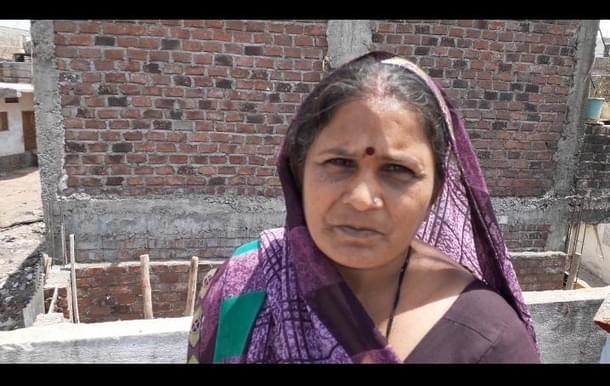
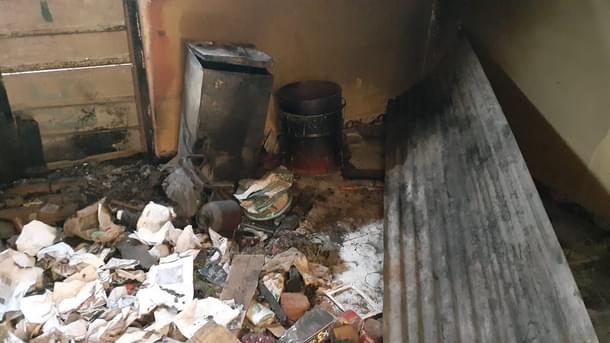
Her house was constructed under Pradhan Mantri Awas Yojana. Around 2000 bricks were kept behind her house to complete the pending work, she said. “The rioters used the same bricks to attack my house,” she said.
She said the rioters also vandalised her house and looted it. Her son has sustained burn marks on his back.
Another resident, Suraj Bai, tears rolling down her cheeks, said petrol bombs were thrown inside her house. She showed her kitchen to me, and said that attackers entered from that side. She says the attackers were old enough to have kids of 14 or 15 years of age.
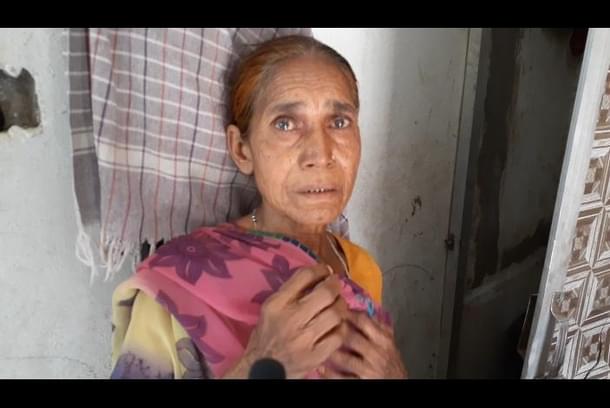
She said the attackers first threw petrol bombs at the door, then broke the kitchen window to jump into the house. The family locked the main entrance and took shelter at their neighbour Sanjay’s house.
Her kitchen wall had marks of stone-pelting.
She alleged the attackers made threats of killing Hindus and raping their daughters and sisters.
Another resident, Kejram Ramesh, said that around 9 pm when he returned home from work, a neighbour, Iqbal, came to him saying, "we are all brothers. Don't worry, we will live here together peacefully. We will not take names of each other.”
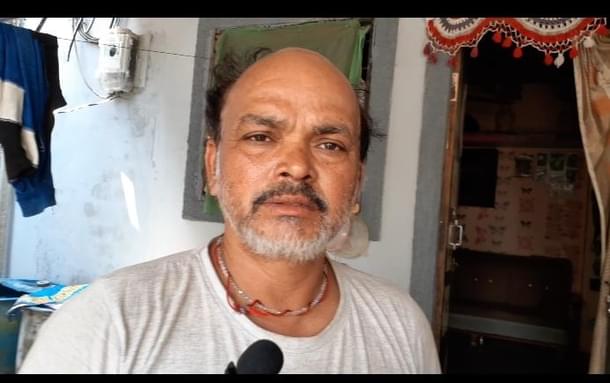
As soon as he got out of his house, stones were pelted at his home, he said. The rioters first attacked the electricity meter to cut the power supply and then attacked them with stones and petrol bombs, he said, and added that some of the attackers were locals while many others were “outsiders”, who he had not seen before.
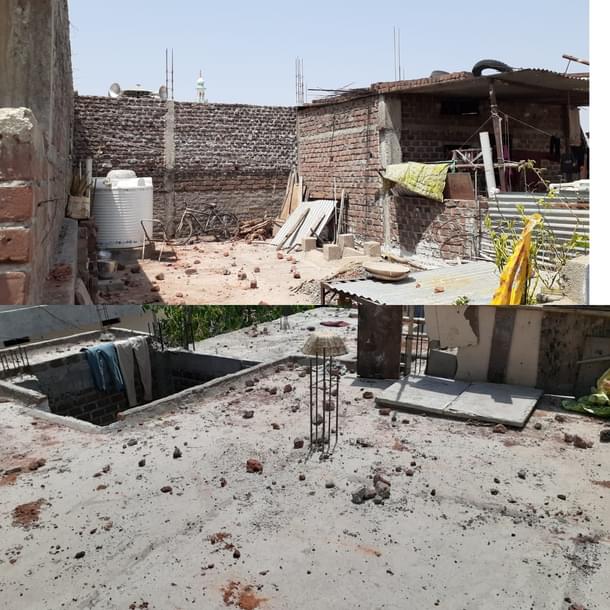
Ikhlakh Khan, brother of deceased Ibresh Khan, said in a video statement recently that his brother was in Anand Nagar when he was attacked. He said that he had gone to the mosque to break his Ramzan fast when locals beat him up.
Bhatwadi Mohalla
This mohalla has congested lanes with locks hung on almost every other door. Heavy police deployment could be seen.
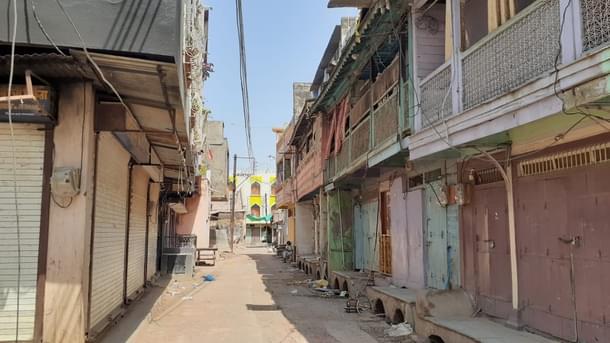
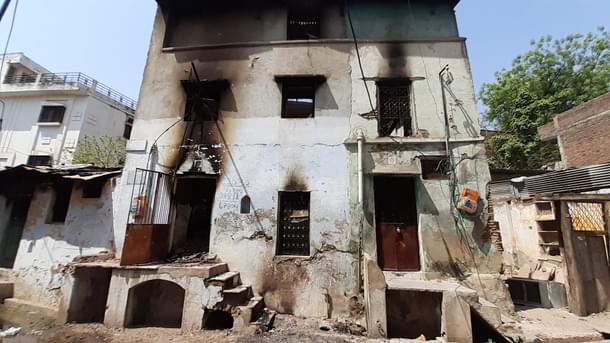
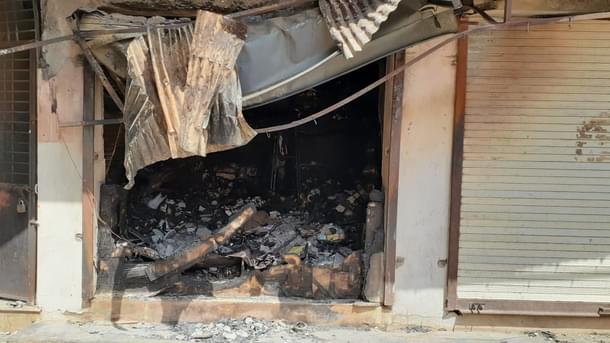
It was in this area where a video showed a building burning, which went viral.
There is a mosque, near which a small temple named Divya Shakti Hanumana Temple is situated. A man was sitting here. He said his name was Jitendra Thakur. On 10 April, rioters pelted stones in this colony chanting, "Kill Hindus, cut them into pieces", he claimed.
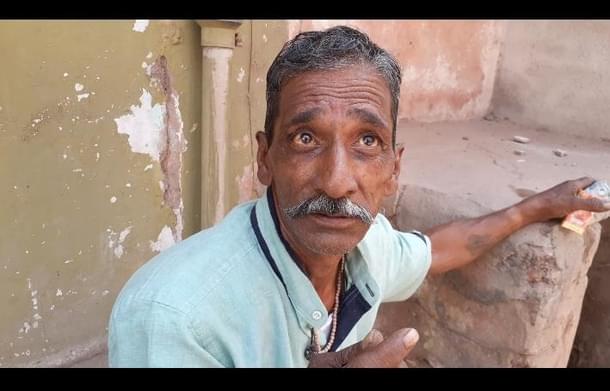
It’s a Muslim-populated colony with only five Hindu families, he said.
“Riots have happened in this area earlier too, but this was bigger and more damaging. I am 62. I have never seen a riot of this kind. Even the 1992 riot was less intense than this one,” he said.
All shops here were shut as the curfew was in place.
Moving in the streets, I met a man named Naushad Muslaman. He said he was angry with the administration as many of his relatives had lost their shelter in the demolition drives.
He added, “Ramadan is going on and our people are left in tears. We cannot go meet them as curfew is imposed. Where will they go?“
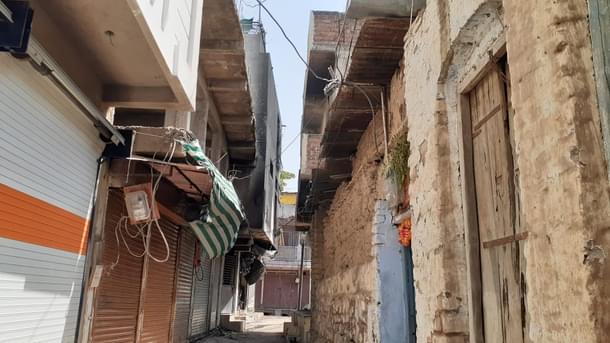
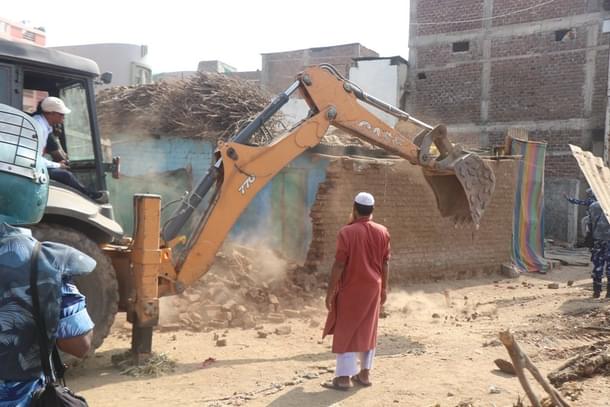
He did not allow this correspondent to take pictures of him or his house.
Tavdi Mohalla
In this Muslim-populated colony, Nasir, a resident, said that a mob of more than 50 people pelted stones at his house and tried to break open the iron gate to enter. He said that they were hurling communal abuses at Muslims and asked him to come and face them.
The Bulldozer Trials
As many as 50 houses and shops belonging to rioters have reportedly been demolished after 10 April. Madhya Pradesh Home Minister Narottam Mishra told the media after the violence that he would “turn those houses into a heap of stones who have pelted stones in Khargone”.
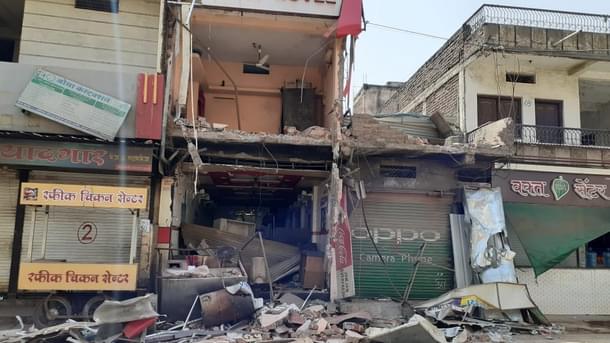
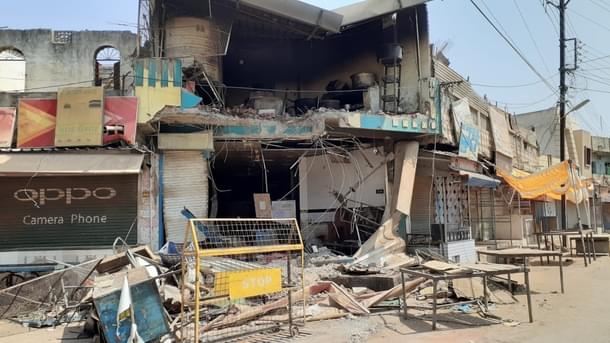
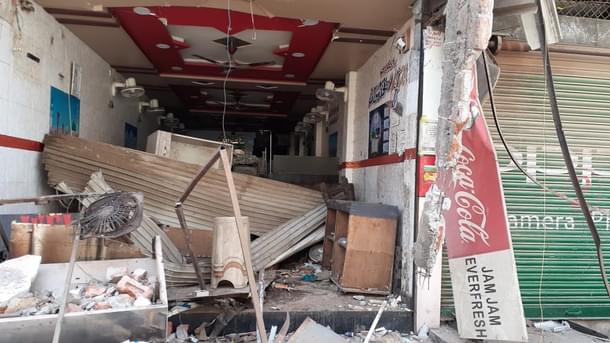
I went to Ibrahimpura, which is located around 7 kilometres from Talab Square, but no one was ready to talk to the media.
Several “illegally constructed houses” have been demolished here.
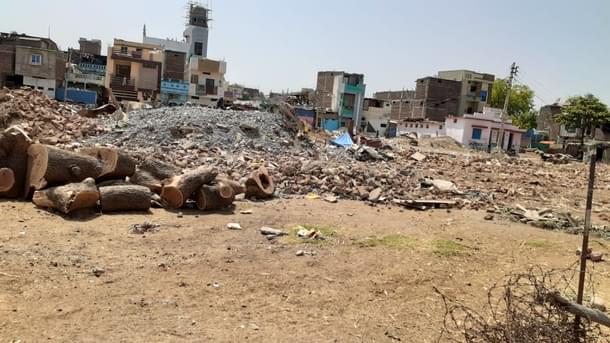
A man, Sheru Khan, was the only one who talked. He pointed to a demolished house and said that the family was currently staying at a cow shelter. ”They spent all night sitting in front of the debris. We offered them food and shelter, but they left the area in tears. Later, we heard some cow shelter accommodated them,” Khan said.
What Followed After My Visit
On 20 April, curfew restrictions were partially lifted and residents were allowed to get out of their homes to get essential items from 8 am to 12 pm and from 3 pm to 5 pm. However, the curfew is still in place.
District Magistrate Anugraha P has reportedly met the victim families and assured them that they would be compensated by the state for their loss.
A boy named Sahil Khan was arrested for a social media post where he threatened to abduct Hindu women.




